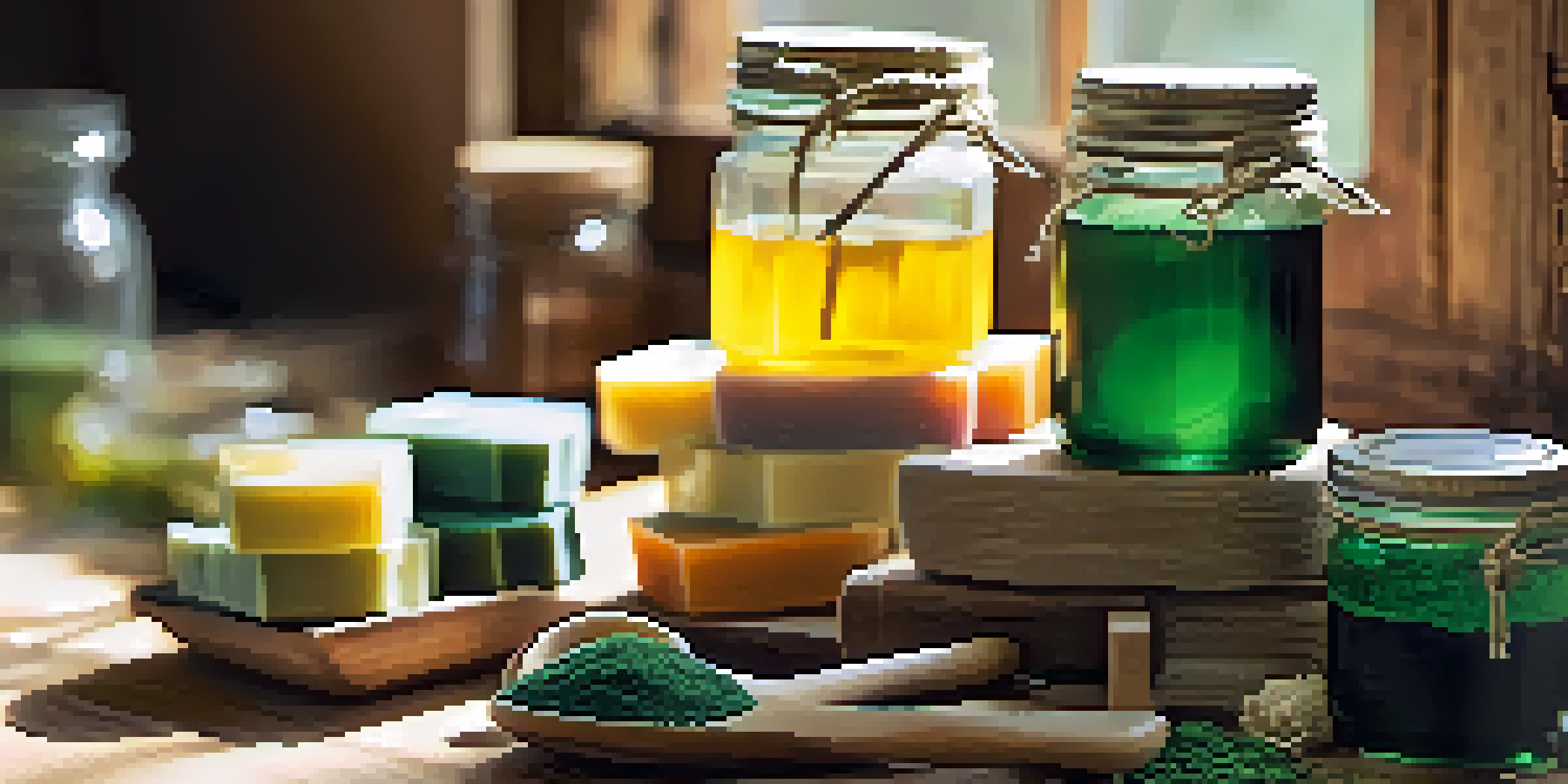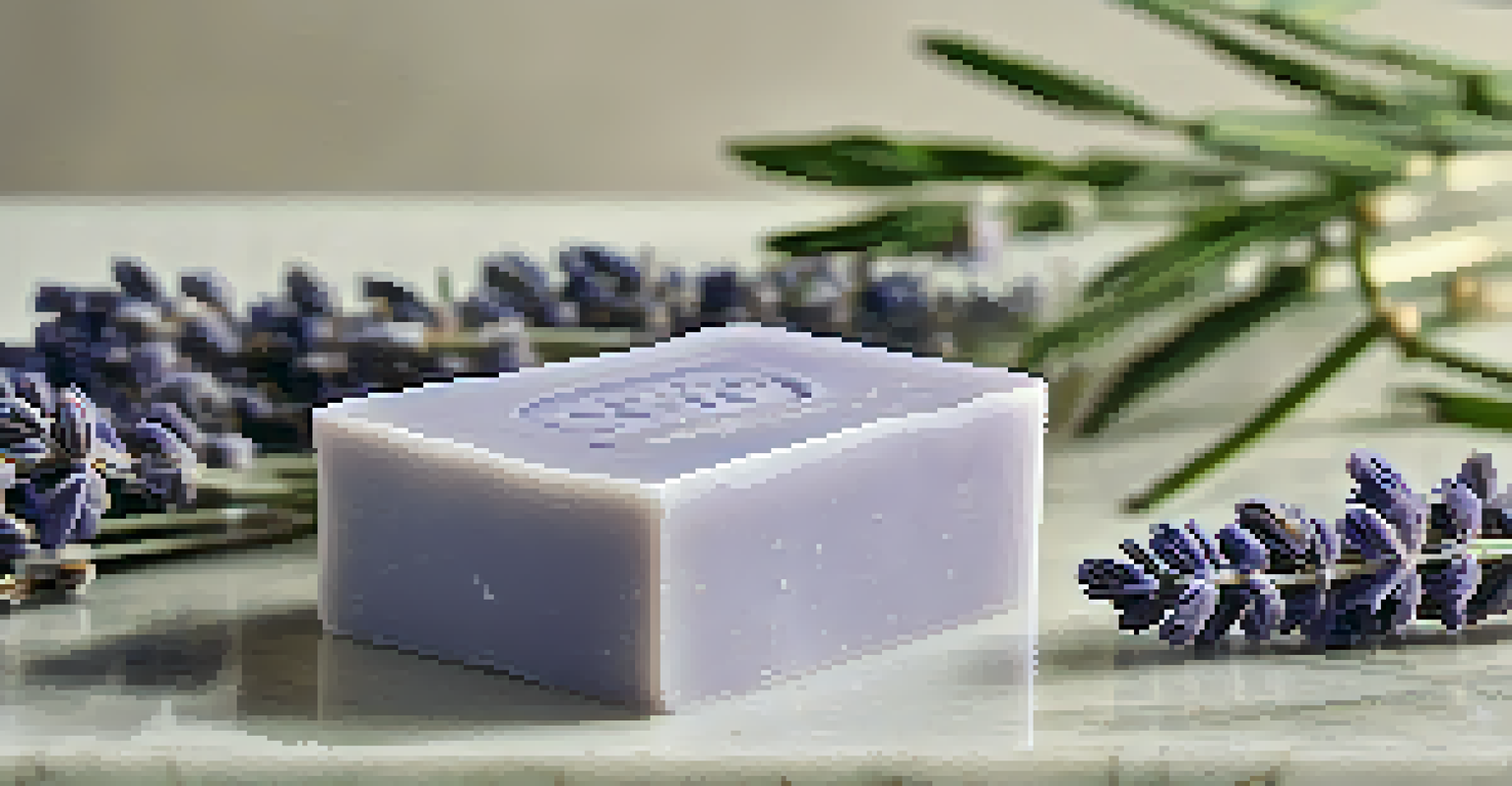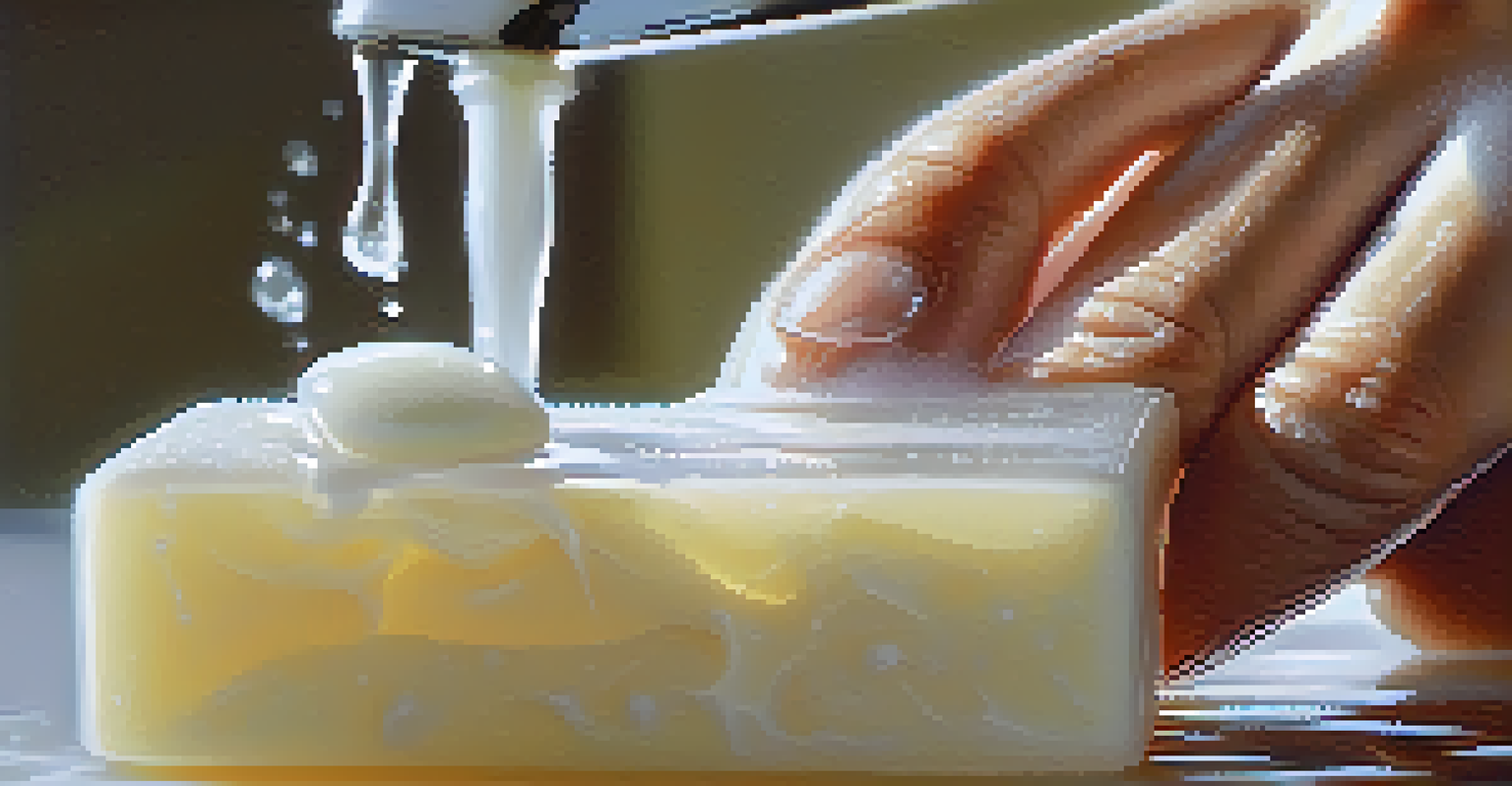How to Customize Soap Recipes for Personal Skin Needs

Understanding Your Skin Type for Custom Soap
Before diving into soap customization, it's crucial to understand your skin type. Is your skin oily, dry, sensitive, or a combination? Identifying your skin type will guide you in choosing the right ingredients that can help enhance its natural balance.
Your skin is your best accessory. Take good care of it.
For instance, if you have dry skin, you might want to incorporate moisturizing oils like olive or coconut oil. On the other hand, if your skin tends to be oily, lighter oils such as grapeseed or sunflower oil could be more suitable. Knowing your skin type lays the foundation for effective customization.
Additionally, consider any specific skin concerns you might have, such as acne, eczema, or aging signs. Tailoring your soap recipe to address these issues will make your soap not only unique but also beneficial.
Choosing the Right Oils for Your Soap
Oils are the backbone of any soap recipe, and selecting the right ones is essential. Each oil offers different properties; for example, olive oil is known for its moisturizing benefits, while castor oil adds a creamy lather. Understanding these properties can help you create a soap that suits your skin's needs.

If you’re looking to boost hydration, consider adding oils like avocado or sweet almond oil, which are rich in vitamins. For a soap that cleanses deeply, oils such as tea tree or neem can be beneficial, especially for acne-prone skin.
Know Your Skin Type
Identifying whether your skin is oily, dry, or sensitive helps in selecting the right soap ingredients for optimal benefits.
Remember, the right combination of oils can transform a basic soap into a luxurious experience tailored just for you!
Incorporating Natural Additives for Benefits
Natural additives, like herbs and clays, can elevate your soap by adding extra benefits. For example, oatmeal can soothe sensitive skin, while activated charcoal is excellent for detoxifying and deep cleaning. These additives not only enhance the effectiveness but also the appeal of your soap.
The greatest wealth is health.
You can also experiment with essential oils, which provide therapeutic benefits and delightful scents. Lavender is calming, while peppermint can invigorate and refresh. Just be mindful of the quantity, as essential oils are potent and a little goes a long way.
Adding these natural elements can turn an ordinary bar of soap into a personalized skincare solution that you and your skin will love!
Understanding Lye and Its Importance in Soap Making
Lye, or sodium hydroxide, is a crucial ingredient in traditional soap making, as it initiates the saponification process. This chemical reaction transforms oils and fats into soap. However, handling lye requires caution, as it can be caustic. Understanding how to work with lye is vital for safety and success.
When customizing your soap, the ratio of lye to oils will depend on the specific recipe you’re using. Online soap calculators can help you determine the exact amount you need. This ensures that your soap is safe and effective for your skin.
Choose Oils Wisely
Selecting the right oils can enhance your soap's properties, catering to your skin's specific needs and preferences.
Once you’ve mastered lye usage, you’ll unlock a world of creative possibilities in soap customization!
Selecting Fragrance and Color for Appeal
Fragrance and color can make your soap not only functional but also visually appealing. If you prefer natural scents, essential oils are a great choice. For a more traditional fragrance, synthetic fragrance oils can be used but always check for skin sensitivity.
Coloring your soap can also enhance its attractiveness. Natural colorants, such as turmeric for yellow or spirulina for green, can provide a beautiful hue without harsh chemicals. However, be aware that some colorants can affect the soap's properties.
Ultimately, the choices you make regarding fragrance and color can reflect your personal style and make your soap a joy to use.
Testing Your Custom Soap for Skin Compatibility
Once your custom soap is ready, it’s essential to test it for skin compatibility. Start with a small patch test on your wrist or inner elbow to see how your skin reacts. This step is crucial, especially if you’ve included new ingredients that your skin may not be familiar with.
If you experience irritation or an allergic reaction, take note of the ingredients used. This will help you refine your recipe for future batches and ensure that your soap remains beneficial for your skin type.
Test for Compatibility
Always conduct a patch test with your custom soap to ensure it is safe and suitable for your skin type.
Remember, customization is a journey, and some trial and error may be necessary to achieve the perfect formula for you.
Storing and Using Your Custom Soap Safely
Proper storage of your soap is vital to maintain its quality and longevity. Store your bars in a cool, dry place away from direct sunlight to prevent melting or discoloration. Using a soap dish that allows drainage is also a great way to keep your soap dry between uses.
When using your custom soap, apply it gently to avoid irritation, especially if you’ve added exfoliants or strong essential oils. Lather it up in your hands or a cloth before applying it to your skin for a more controlled application.

Taking these precautions ensures that your personalized soap remains effective while providing a delightful bathing experience.